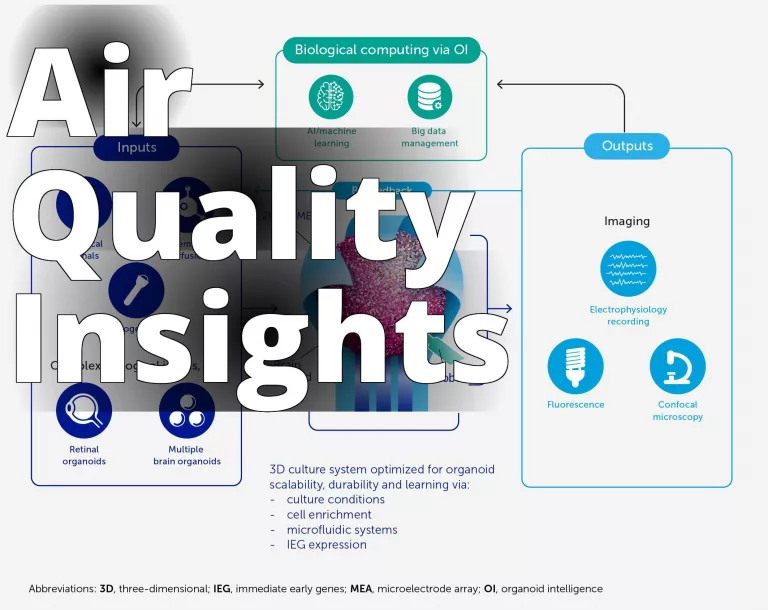Components of Developing an Air Quality ML Model
| Components | Description |
|---|---|
| Data Collection | Collection of high-quality air quality data from ground-based monitoring stations and sensor networks. Essential for training models and ensuring prediction accuracy. |
| Feature Engineering | Selecting and transforming relevant variables within air quality data to create meaningful input features for machine learning algorithms. Enhances model performance and interpretability. |
| Model Training | Rigorous training of algorithms on historical data to uncover patterns and relationships. Involves fine-tuning model parameters to minimize prediction errors and improve overall performance. |
| Model Evaluation | Meticulous evaluation of trained models to assess their predictive capabilities and generalization to unseen data. Crucial for validating reliability and accuracy in real-world applications. |
| Data Quality | Ensuring high-quality air quality data from diverse sources and promoting data sharing among stakeholders to enhance model performance and reliability. |
| Interpretability | Enhancing the interpretability of ML models and increasing transparency in decision-making processes to build trust among users, policymakers, and the public. |
| Scalability and Deployment | Scaling up models to cover expansive geographical regions, integrate diverse data streams, and deploy them in real-time applications. Requires robust infrastructure, computational resources, and interdisciplinary collaboration. |
- Data Collection: The foundation of Air Quality Machine Learning Models rests upon the collection of high-quality air quality data from diverse sources, including ground-based monitoring stations and sensor networks. This data is pivotal for training the models and ensuring the accuracy of their predictions.
- Feature Engineering: The process of selecting and transforming pertinent variables within air quality data to create meaningful input features for machine learning algorithms is known as feature engineering. This step significantly enhances the models’ performance and interpretability.
- Model Training: Through rigorous training, algorithms delve into historical data to uncover intricate patterns and relationships. This entails fine-tuning model parameters to minimize prediction errors and enhance overall performance.
- Model Evaluation: Once trained, models undergo meticulous evaluation to gauge their predictive capacities and generalization to unseen data. This critical step is essential for validating the reliability and accuracy of the models in real-world applications.
Air Quality Models Around the World
Countries have created their own air quality models, as shown in the following table.
| Country | Key Air Quality Models |
|---|---|
| United States | – Dispersion Modeling – Photochemical Modeling – Receptor Modeling – EQUATES, CMAQ, WRF |
| Canada | – GEM-MACH – CRCM and Unified Regional Air-quality Modeling System |
| United Kingdom | – Pollution Climate Mapping (PCM) – CMAQ – FRAME |
| Australia | – GEM-MACH – Emissions Model for Australian Air Quality Forecasting System |
| South Korea | – GEM-MACH – AirKorea |
| Global (WHO) | – DIMAQ (Particulate Matter Estimates) |
Common Python and R Libraries for Air Quality Modelling
Both Python and R offer a variety of libraries that can be instrumental in predictive air quality modeling and data analysis. Here are some common libraries used for air quality modeling in Python and R:
Python Libraries:
- xgboost: A popular library for gradient boosting that can be utilized for predictive modeling in air quality analysis.
- atmospy: Provides visualization and analysis tools specifically tailored for air quality data in Python.
- python-aqi: A library designed to convert between Air Quality Index (AQI) values and pollutant concentrations, essential for air quality assessment.
R Libraries:
- openair: A comprehensive package offering tools for the analysis, interpretation, and understanding of air pollution data, including meteorological data and dispersion model output.
- AirSensor: An open-source R-package that facilitates working with air quality data, particularly from PurpleAir sensors.
- AirBeamR: An interactive data tool in R that enables visualization and analysis of AirBeam, OpenAQ, and PurpleAir data, enhancing air quality monitoring capabilities.
These libraries play a crucial role in enabling researchers and practitioners to conduct sophisticated analyses, develop predictive models, and gain insights into air quality dynamics using Python and R.
Scalability and Deployment
Scaling up Air Quality ML Models to cover expansive geographical regions, integrate diverse data streams, and deploy them in real-time applications necessitates robust infrastructure, computational resources, and interdisciplinary collaboration.
Read more: The Benefits of Cloud Computing and Data Storage for Scientific Research
Conclusion
In conclusion, Air Quality Machine Learning Models stand as a remarkable innovation in environmental informatics, offering a potent tool for monitoring, analyzing, and mitigating air pollution. By leveraging the capabilities of artificial intelligence and data science, these models have the potential to reshape our approach to addressing air quality challenges, paving the way for a sustainable and healthier future for generations to come.
Insider Tip: Collaboration among interdisciplinary teams is key to overcoming challenges in scaling up Air Quality Machine Learning Models for real-time applications.
Explore more insightful articles: – Air Quality Monitoring Technologies – AI in Climate Change Prediction – Big Data Technologies for Environmental Insights


